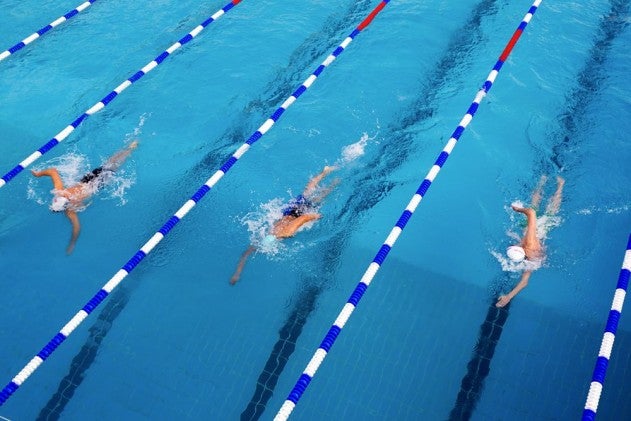The Importance Of Swimming Slow During Recovery Sets

Photo: <a href=http://shutterstock.com>Shutterstock.com</a>
Swimming slow on the recovery portion of a set is very important. “Active recovery,” or exercising at less than 30 percent of maximum intensity, allows the body to lower the heart rate slowly while assisting blood circulation in the removal of lactic acid. Athletes typically feel better after an active recovery, versus just staying in place, when asked to perform another high-intensity effort.
In the swimming world, active recovery is common in two places: between each effort in a sprint set or after the completion of a difficult set. In both cases, it benefits the swimmer to do the 25–100 yards in a recovery zone. Do not focus on the clock or think about pace. Instead, focus on an aspect of stroke technique or choose a drill that will force slow and easy recovery.
Active recovery also has a place outside of the pool. Walk or jog easy between run intervals on the track instead of just standing in place. Use an easy 30-minute bike ride after a race to aid in recovery and decrease your downtime before training hard again. Approach all recovery sessions as active rest versus workouts or training.